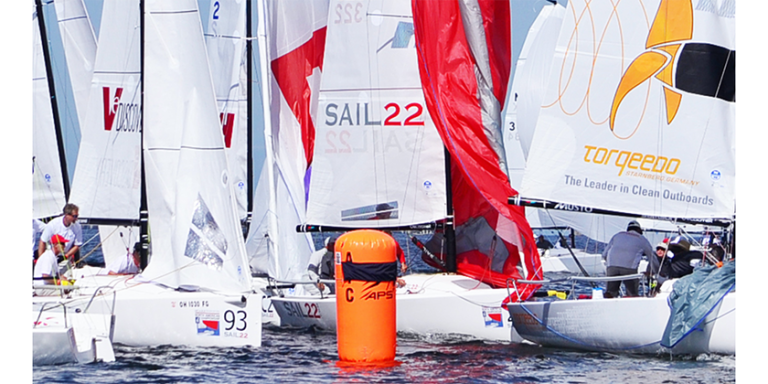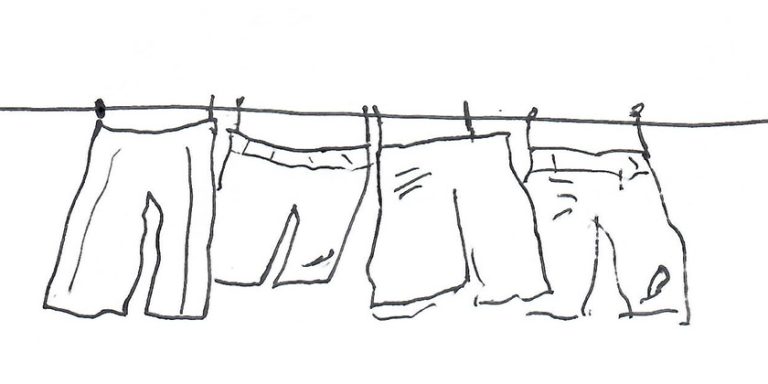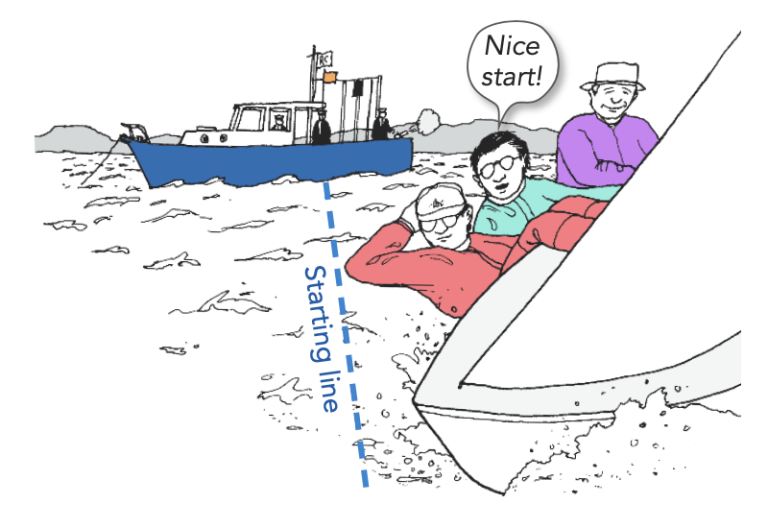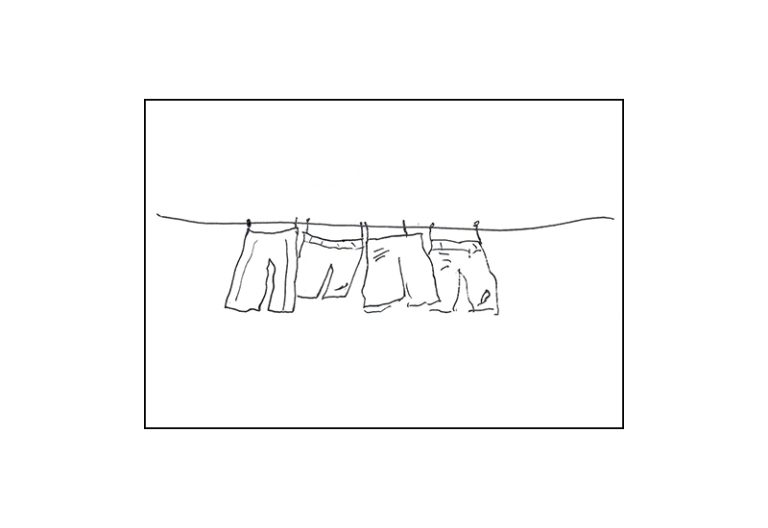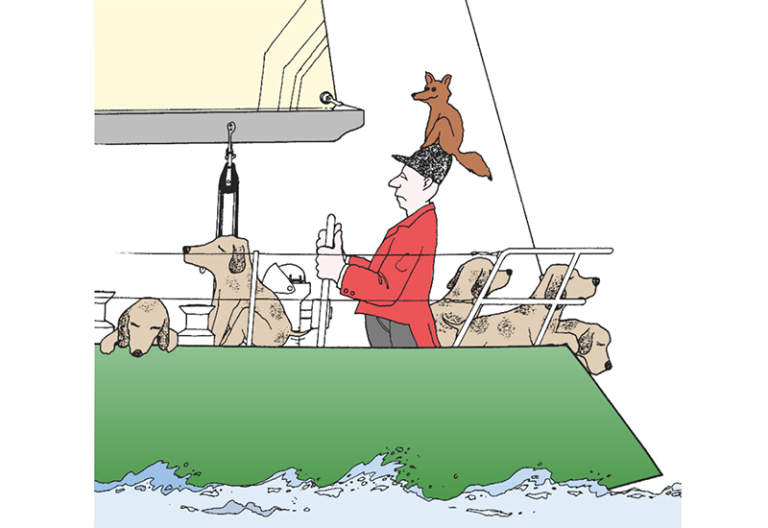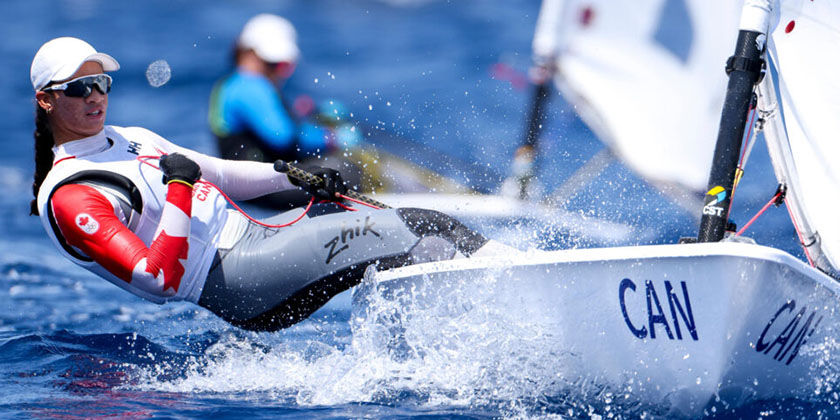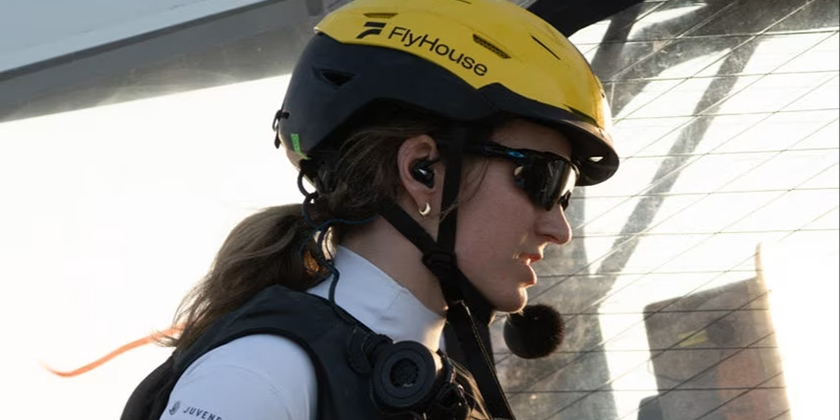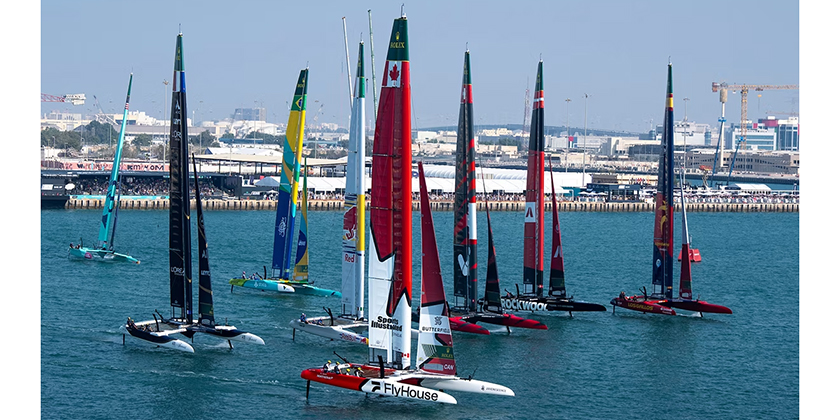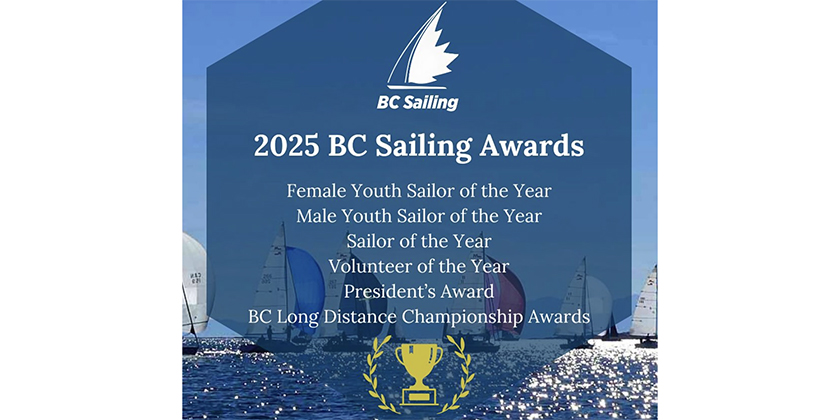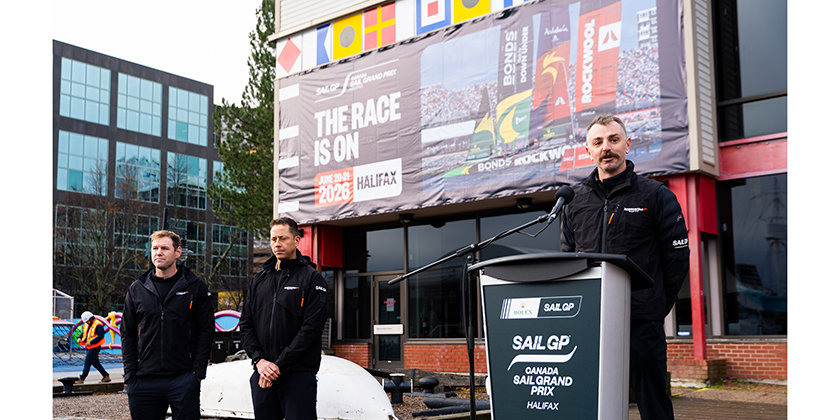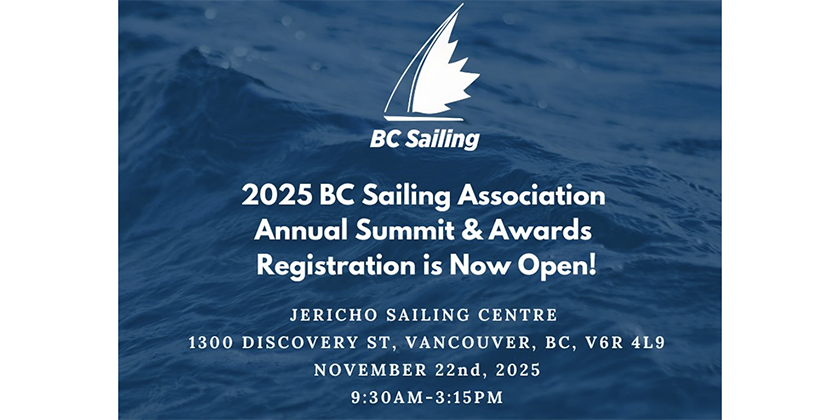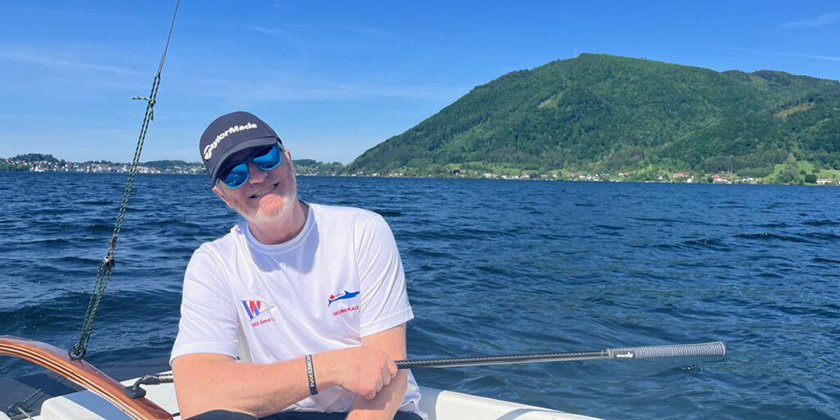Speed & Smarts: Mark-Rounding Principles Part 3 – Slow Down to Round the Mark Faster
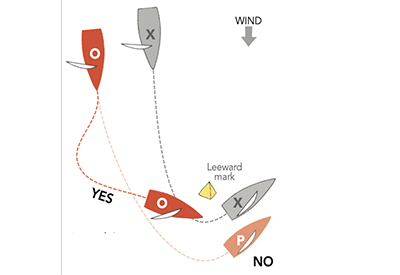
October 19, 2022
Read Part 2 HERE
In most situations, faster is better because the goal of racing is to get to the finish line as quickly as possible and beat the other boats. But once in a while you need to slow down. Rounding the leeward mark is a perfect example. If you round on the outside of one or more other boats, you will often be much worse off than if you slowed down and rounded right behind them – Fig 1.
Fig1 – One of the most common mistakes at leeward marks is made by boats that have an outside overlap when they reach the zone and then stay there for the entire rounding (P). This doesn’t usually work well because the outside boat ends up in the bad air of the in- side boat (and in the bad air of boats just ahead) without the option to tack, which is not fast. It is almost always better for the outside boat (O) to slow down so she can round right behind the boat that was inside (X) and be close enough to the mark to touch it. This gives her a much better chance for clear air and the ability to tack if she likes the left side of the beat.
Similarly, it is often the case that the closer you are to a boat ahead, the better your chance of passing them. But when you’re going around the leeward mark, closer is not always better (see Fig 2). Rounding right behind a boat creates two problems: 1) If the other boat slows unexpectedly, you may have nowhere to go except to leeward and outside of them, which is very slow; and 2) when you’re right behind the other boat you’ll have bad air and little chance of getting clear air by pinching above them. For these reasons, it’s usually better to be half a boatlength, rather than half a yard, behind the boat ahead.
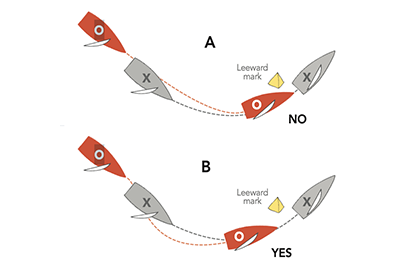 Fig 2 – It’s tempting to get as close as possible to the O boat ahead (A), but at a leeward mark rounding this often backfires. The problem is that it’s hard to predict what the boat ahead will do. If you catch up to them you must avoid a collision by heading up or down. If their stern has not yet cleared the mark, your only option is to bear off into their bad air, which is not good. It’s much safer to stay farther behind, at least until they pass the mark (B). That will give you more options and a better chance of getting clear air after the mark.
Fig 2 – It’s tempting to get as close as possible to the O boat ahead (A), but at a leeward mark rounding this often backfires. The problem is that it’s hard to predict what the boat ahead will do. If you catch up to them you must avoid a collision by heading up or down. If their stern has not yet cleared the mark, your only option is to bear off into their bad air, which is not good. It’s much safer to stay farther behind, at least until they pass the mark (B). That will give you more options and a better chance of getting clear air after the mark.
Take care of maneuvers early.
At almost every mark, there is a certain amount of boathandling and sailhandling that is necessary in order to have a successful and fast rounding. You must get ready for a spinnaker set at the windward mark, prepare to jibe at the reach mark and take down your chute at the leeward mark. In almost all cases, it’s better to do those maneuvers a little early rather than a little late.
Consider a typical leeward mark rounding. If you drop your spinnaker early, the worst that can happen is losing a boat (or two) that gets an inside overlap on you or breaks your inside overlap before the zone. But dropping too late can lead to disaster. A bad leeward mark rounding can cost you many boats.
When approaching a mark, do everything sooner than you think. Marks have a way of creeping toward you faster than you think. If you wait too long, you risk having a problem (e.g., a knot in the spinnaker halyard) that could cost you lots of time and distance. Unless you are fighting to gain or break a small overlap, the tiny bit you gain by pushing your preparations as late as possible is usually not worth the potential cost. Be conservative by preparing early.
Flying the spinnaker a little longer does not help as much as many sailors think. In most cases, dropping late is not worth the risk.
Next issue (Nov 2) – Mark Rounding Part 4 – At the windward mark
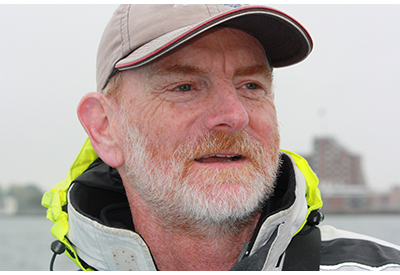 Dave Dellenbaugh is the publisher, editor and author of Speed & Smarts, the racing newsletter. He was the tactician and starting helmsman on America3 during her successful defense of the America’s Cup in 1992 and sailed in three other America’s Cup campaigns from 1986 to 2007. David is also two-time winner of the Canada’s Cup, a Lightning world champion, two-time Congressional Cup winner, seven-time Thistle national champion, three-time Prince of Wales U.S. match racing champion and past winner of the U.S. Team Racing Championship for the Hinman Trophy. He is currently a member of the US Sailing Racing Rules Committee (and was its chairman from 2005-2008).
Dave Dellenbaugh is the publisher, editor and author of Speed & Smarts, the racing newsletter. He was the tactician and starting helmsman on America3 during her successful defense of the America’s Cup in 1992 and sailed in three other America’s Cup campaigns from 1986 to 2007. David is also two-time winner of the Canada’s Cup, a Lightning world champion, two-time Congressional Cup winner, seven-time Thistle national champion, three-time Prince of Wales U.S. match racing champion and past winner of the U.S. Team Racing Championship for the Hinman Trophy. He is currently a member of the US Sailing Racing Rules Committee (and was its chairman from 2005-2008).
You can subscribe to the Speed & Smarts newsletter HERE.

